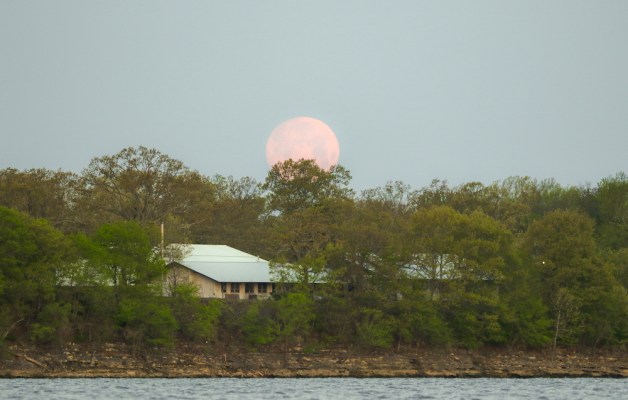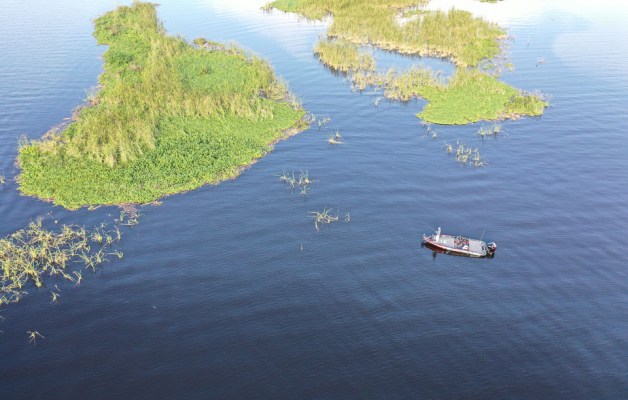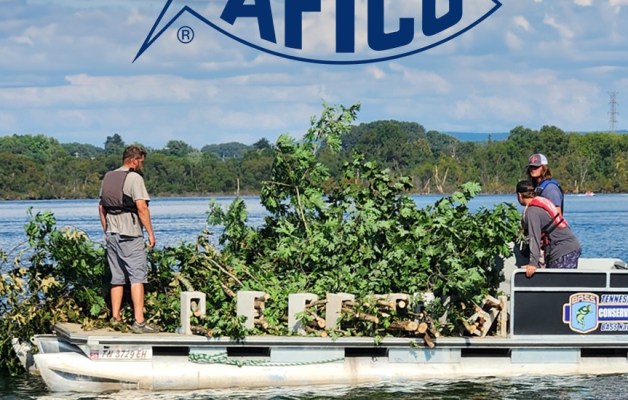
Debate rages about what to do with excess water from Lake Okeechobee. Laden with nutrients, it feeds algae blooms and kills fish when discharged by the Corps of Engineers into coastal waters on both sides of southern Florida.
But what about bass in the Big O? They’re an integral part of a recreational fishery worth about $49 million to counties surrounding the 448,000-acre lake that is half the size of the state of Rhode Island.
“This is an iconic fishery, and yet all you hear about are the massive discharges and the algae blooms. You don’t hear about the lake itself, other than [as] the source,” said Gene Gilliland, B.A.S.S. national conservation director.
Not to worry.
“They’re doing great,” said Andrea Dominguez, fisheries biologist for the Florida Fish and Wildlife Conservation Commission (FWC). “We’re doing a survey now [early December] and are seeing a lot of fish over 16 inches, and a couple above 24.
“People are happy. They’re catching fish, especially on the north end of the lake,” she added. “Bass are healthy and growing.”
That’s not only good news for bass fishermen generally, but Elite Series pros especially, as they will compete there Feb. 23-26. The last time they fished there was in 2012, when Ish Monroe won with a four-day weight of 108 pounds, 5 ounces.
But sadly for coastal fisheries and residents alike, the lake’s eutrophic water must be channeled east and west when it rises too high, both to keep the 70-year-old dyke from being breached and to prevent drowning of the marshes, which are key not just for the health of the fishery, but the entire Okeechobee ecosystem. Before the dyke was built and the Big O altered from a natural lake to a hybrid impoundment, high water flowed south. It replenished the Everglades, which absorbed most of the nutrients, before sending the water on to vitalize Florida Bay.
The dyke was built to protect towns and farms south of the lake, following major hurricanes that struck south Florida during the 1920s, causing massive flooding and killing nearly 2,000. Additionally, the Corps installed water-control structures to direct water via canals into the St. Lucie and Caloosahatchee estuaries.
With the lake walled off, much of the land around it was converted to agricultural use, with dairy farms and beef cattle ranching to the north and sugar cane and vegetable farming to the south. These added to the nutrient load of nitrogen and phosphorus already flowing into the Big O from the Kissimmee River watershed and developed areas to the north.
For decades, runoff pollution has been a concern, both for the lake and the estuaries. But exceptionally high water, starting in January 2016, forced heavier and more frequent discharges than normal, decimating the estuaries and garnering most of the headlines. In fact, an algae bloom covered 33 square miles in the southern portion of the lake during May, no doubt nourished by that same high water.
Algae blooms occur regularly in many of Florida’s southern freshwater fisheries, but usually they appear later in the year, when the water is warmer. “They are very difficult to predict,” said Terrie Bates of the South Florida Water Management District. “They move with the wind. They can form and dissipate in a week’s time.”
Fortunately, the Big O has proved resilient, thanks to its abundant aquatic vegetation, especially the fringe of bulrush on the lakeward side. It not only provides beneficial habitat directly, but helps dissipate wind and wave energy, allowing eelgrass, spike rush and pepper grass to grow in interior areas of the marsh.
That resilience is also thanks to Corps discharges of dangerously high water.
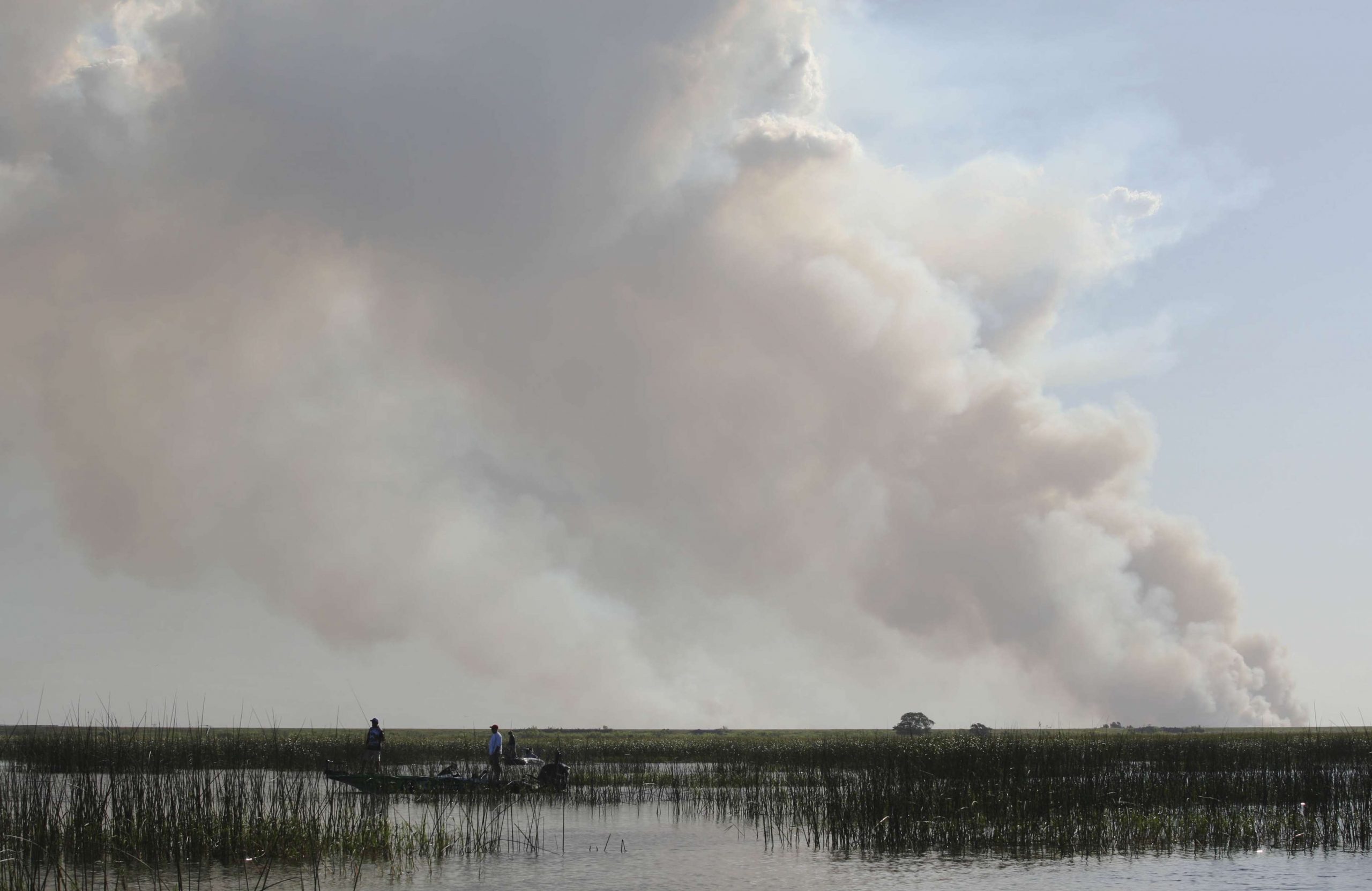
“Excessive stages destroy this outer bulrush wall, which is then followed by damage to the interior marsh,” said Amber Nabors, FWC’s communications and marketing manager.
“FWC puts high priority on efforts to maintain a healthy diversity, abundance and distribution of aquatic vegetation in the lake to support the abundant fish and wildlife resources there. We do this with both direct management actions and by closely working with partner agencies to influence water-level management to include fish and wildlife benefits.”
Those management actions include scraping, planting and targeted herbicide treatments, as well as occasional burnings.
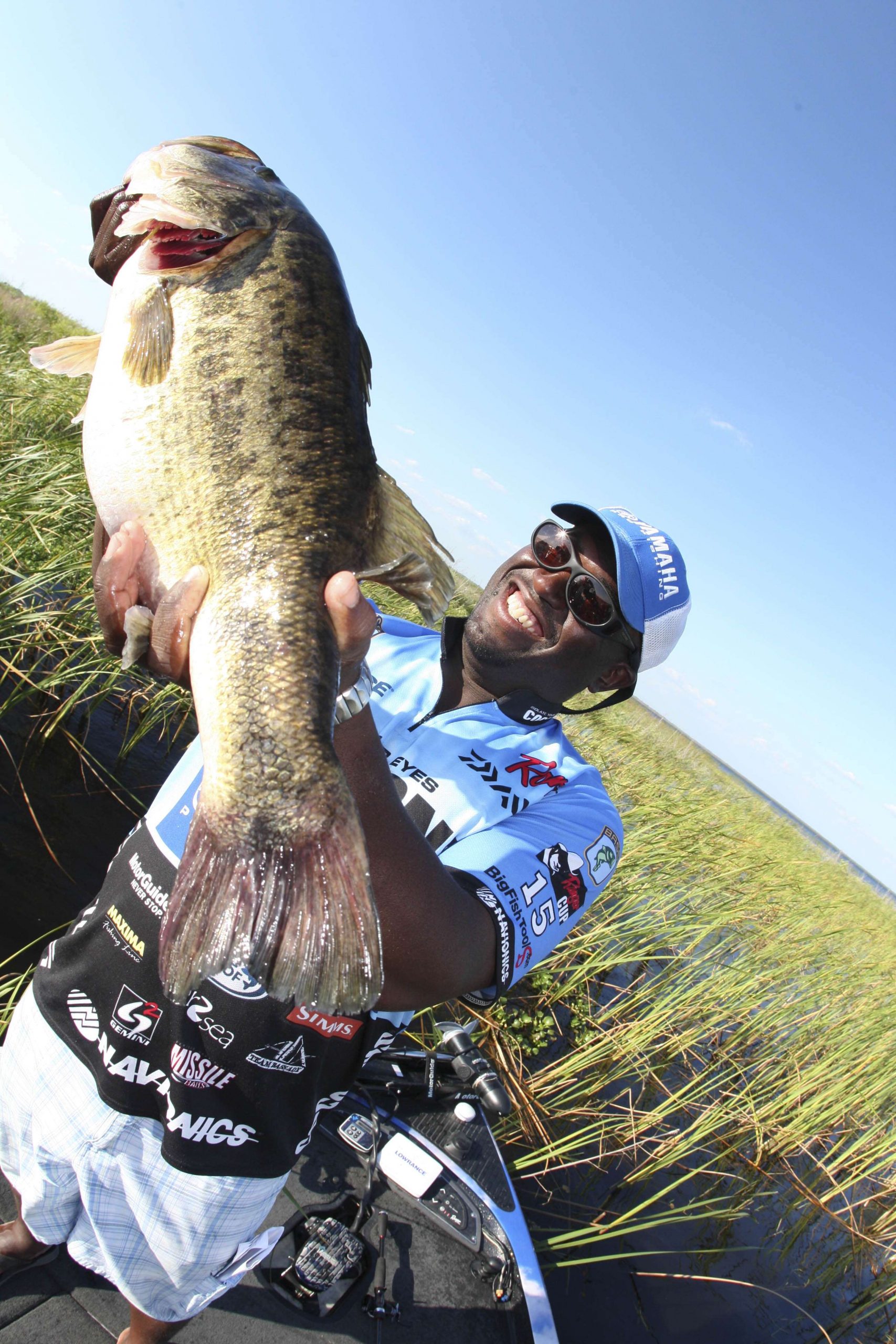
“We want the correct plants,” said Dominguez. “We don’t want stands of cattails to get too big because we want the bulrush to grow.”
Water hyacinths and water lettuce also are especially problematic because they grow so quickly and block waterways. The latter can be a problem both for navigation and for sustaining flow, which is critical for maintaining water quality.
High water and blocked flow are an especially lethal combination, as plants die and decompose, burning up dissolved oxygen in the water and releasing a “sewer gas” smell into the air. “It happens sometimes back in the marshes,” said Sam Griffin, who grew up on the lake and guided for decades there. “When it does, the fish go around it to get back in the marshes to spawn.”
Dominguez added, “We want to keep the waterways clear and we don’t want just one plant [species]. We want diversity, not monoculture.”
Ideally, she explained, fall water levels will be high enough to allow bass to migrate back into the marsh. From winter into spring, they will recede, with stability during the summer, when fish can move out into the lake for refuge in cooler water, if necessary.
Of course, storms and heavy rains in 2016 forced the Corps to intercede more than it does during a typical year. “Without those discharges, the vegetation would have been smothered,” the biologist added.
Knowing the importance of Okeechobee’s sportfishery and its ecosystem in general, FWC biologists talk weekly with the Corps, providing their opinions on what’s best in terms of water levels, Dominguez explained. “We advocate if we see a need.”
Nabors added, “FWC doesn’t only manage for fish, but also waterfowl, wading birds, alligators and other species.”
Additionally, FWC has an intra-agency team working on Okeechobee/Everglades issues, as the ecological disasters on both coasts during 2016 forced both federal and state officials to accelerate the search for a solution to the lake’s high water. Should flow be restored to the south? Should reservoirs be built north or south of the lake to store excess water?
What can be done to lessen the nutrient load from agriculture and upstream development? The target phosphorus level for Okeechobee is 105 metric tons annually. In 2015, it was 450. About 37 percent of that came from land that drains into the Kissimmee River, according to the South Florida Water Management District. Sources include citrus groves, dairy farms and neighborhoods as far north as the Orlando suburbs.
Whatever the solution, FWC intends to make certain that it will not negatively impact the Big O and its world-class bass fishery.
“All of the efforts in Everglades restoration, including reservoirs, water management north of the lake, discharges and moving more water south, should ultimately allow flexibility and better management of the lake for ecological benefits, including sportfish management,” said Nabors.



